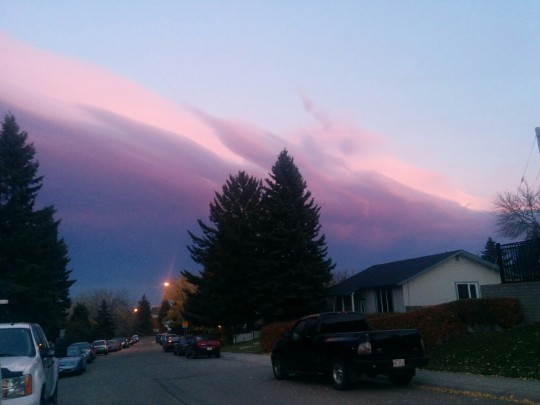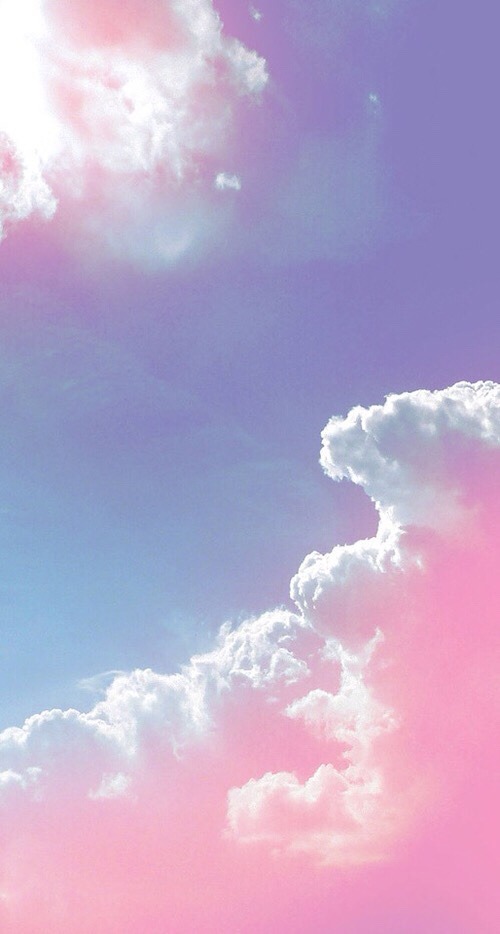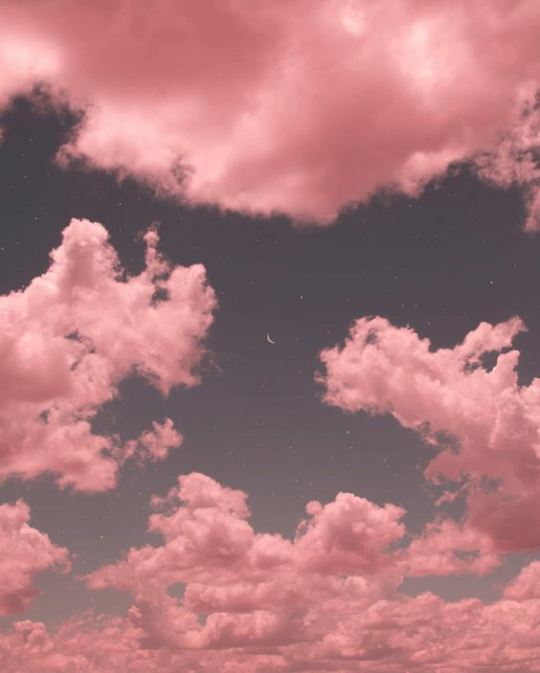Text
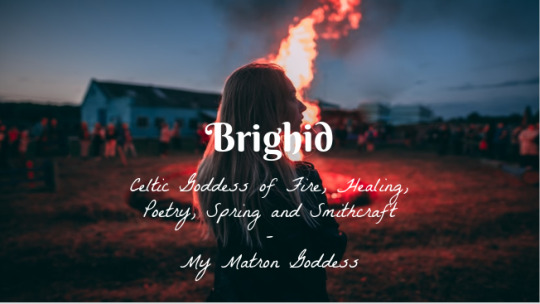
In Irish mythology, Brigid is the daughter of the Dagda and had two sisters also named Brigid and is part of the Tuatha de Danann, the supernatural Irish race. The three sisters made up the triple aspect of the one goddess: Brigid of the hearth, Brigid of the forge and Brigid of Inspiration. She is a goddess of spring, fertility, family, the hearth, childbirth, fire, blacksmiths, scholars, physicians, prophets, healing, poetry, occult knowledge, and justice. She was said to be born at sunrise and is often depicted with solar rays coming out of her head, making her one of the Irish solar deities alongside Lugh. It is said that wherever she walks four leaf clovers and flowers will grow. She also created the tradition of “keening” when her son Ruadan died in battle, a song-like wail used by women at funerals. In some cases she is also the goddess of sacred wells, springs and healing waters.
History
Her name comes in different spellings like Brig, Brighid, Brigit, or Brigid but it means “Exalted one” or “Fiery arrows”. She is a goddess of Pre-christian Ireland but versions of her are found all over Europe; she has ties to Brigantia, a warrior goddess of the Brigantes tribe of Britain. She was a beloved goddess of the Celts and has survived through centuries including the Christianization of Ireland and the rest of Europe where most traces of Druidism and Paganism were forgotten. The people of Ireland loved her so much and refused to let her be demonized by the church -like the rest of the gods- that they converted her into a saint known as St. Brigid of Kildare. There are also three rivers named after her one in Ireland, Wales and England: Brigit, Braint and Brent.The river that runs through Wales is known to have healing properties.
Imbolc
Also known as Brigid’s day, Candlemas or St. Brigid’s feast, Imbolc is one of the four fire festivals in Celtic paganism and celebrates the return of spring. Since Brigid is the goddess of spring and was said to go away during the winter, people would light a candle in honor of her return. Offerings of milk, bread, and corn cakes were set out and a seat at the dinner table was left open for her presence. Cows and sheep were seen as sacred to the goddess because they would provide milk for the town during the cold months and they would give birth around Imbolc. This festival celebrated the Maiden aspect of Brigid and young women would carry corn dollies dressed in white which represented the goddess. The women would also dress in white and attend a special feast for Imbolc where young suitors could mingle with the ladies. Imbolc is a time of fertility, cleansing and the light returning after a long winter.
Correspondences
Elements- Water & Fire
Animals- snakes, ewes, cows, bees, oxen, owls and hibernating animals.
Plants- blackberry, hawthorn, basil, mugwort, apple, heather, dandelion, snowdrop, willow, oak, shamrock, crocus, trillium, corn, lavender and sage. Personal one is cinnamon
Crystals- amethyst, bloodstone, carnelian, garnet, moonstone, clear quartz, and peridot.
Symbols- Brigid’s cross, candles, triquetra, faeries, four leaf clover, cauldron, chalice, corn dolly, anvil or hammer, poetry, forges, hearths, wells, rock formations.
Colours- green, red, white, gold and blue
Devotional Acts
offer her blackberries, baked goods, milk and honey or beer
dedicate a piece of your art to her like painting, knitting, singing, etc.
meditate with fire
savour the warmth of the sun or fire
incorporate the elements of water and fire into your craft
write her a poem
watch the sun rise
say hi to cows and sheep :)
hang a Brigid’s cross above your doorway for protection and blessings
study healing magick, reiki, herbalism and faeries
wear the colours of fire or white
plant a bee garden

4K notes
·
View notes
Photo
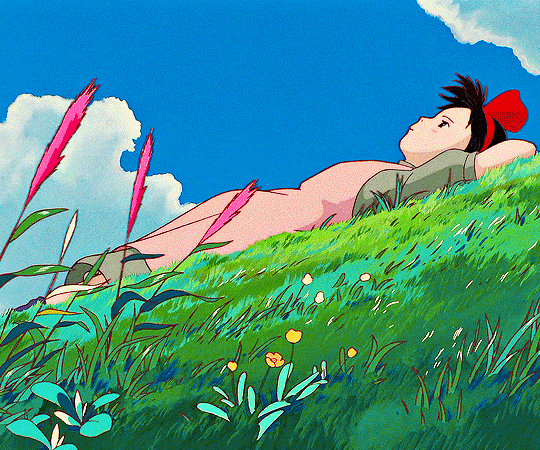
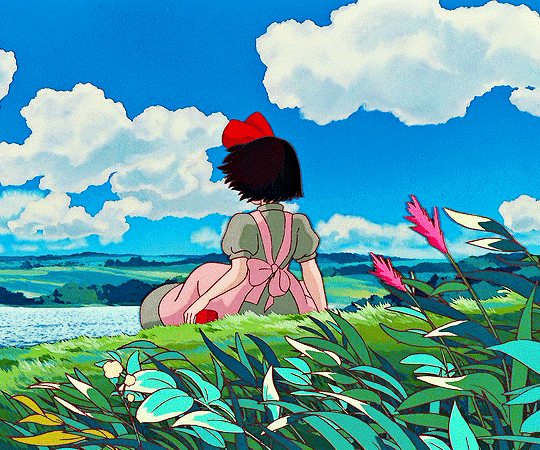
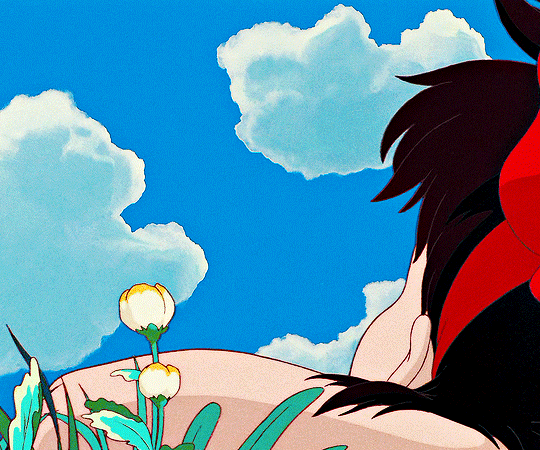
— Kiki’s Delivery Service 1989, dir. Hayao Miyazaki
25K notes
·
View notes
Text
*comes online*
*reblogs 30 things within 5 minutes*
*fucks off again*
614K notes
·
View notes
